Part of the strong textile tradition of India, Pakistan and Bangladesh, khadi is the coarse, handspun and hand-woven material usually made from cotton yarn. The making of khadi (derived from the word khaddar) involves converting the fibre into yarn with spinning wheels, and then weaving the yarn into fabric using looms. Hand-spinning and weaving have been a part of the social and cultural life of India for centuries.
More like this:
- The floral fabric that was banned
During the Vedic period (1500 to 1100 BCE) , a spinning wheel was considered a precious wedding gift. Archaeological evidence of terracotta spindles, figurines wearing woven fabric and fragments of cotton cloth have been found in the ruins of the Indus Valley Civilisation. In the murals of the Ajanta Caves from the 5th Century, images of women spinning cotton yarn adorn the walls.
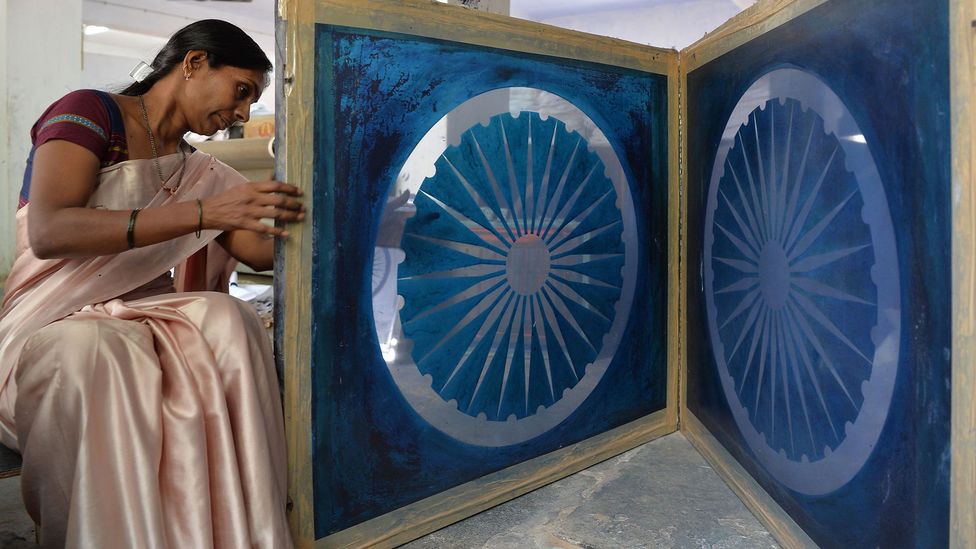
Khadi is a fabric that historically symbolises freedom – and is now being used in luxury fashion (Credit: Getty Images)
Trade routes from India carried cotton to other parts of Asia and Europe. In the 17th Century, handwoven muslin of a translucent quality from Bengal and Dacca became popular. The British East India Company exported calico fabric and chintz from India, which became all the rage in Europe, as it was comfortable, durable and low priced. By the early 18th Century, worried by the popularity of Indian textiles, England banned Indian fabrics and instead flooded India with machine-made fabric, which dealt a huge blow to handwoven khadi. The British continued to buy cotton at a cheap price from India, weave it into clothes in Britain – and sell them at a hefty price in India.
It was Mahatma Gandhi, the freedom activist and political leader, who revived interest in the hand-spun fabric in 1918, by making it a powerful political symbol of swadeshi (all things Indian). This caused Indians to take pride in "Made in India" textiles once again, boycotting British-made fabric. Ghandi made sitting in front of a charkha (spinning wheel) a social statement, and promoted khadi to improve socio-economic conditions, and to encourage self-reliance, especially among people living in Indian villages. "Swaraj [self rule] cannot come through the machine. But if 200 million people with full understanding, produce khadi with their own labour and wear it, the face of India will be transformed," he said.
In her book Clothing Gandhi's Nation: Homespun and Modern India, Lisa Trivedi, associate professor of history at Hamilton College, New York, writes: "Acquiring the skills and the tools necessary to produce handspun and hand-woven cloth allowed Gandhi to do more than downplay industrially manufactured goods, whether foreign or indigenous; for the first time he could proffer the local consumption and production of handmade goods as a path to India's liberation".
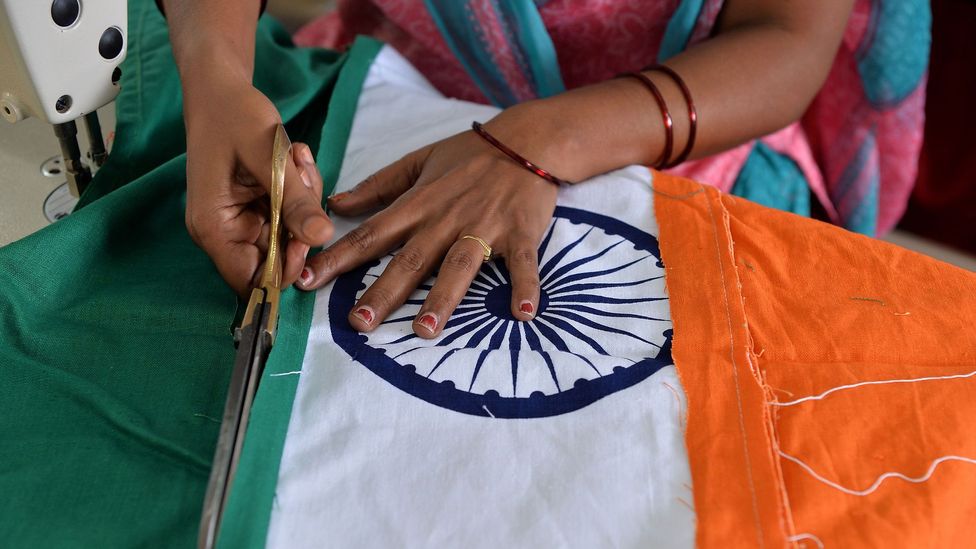
India still makes all national flags with khadi (Credit: Getty Images)
It was in 1925 that the All India Spinners Association was formally established in order to produce and sell khadi. After Independence, the Indian government formed the Khadi, Village and Industries Commission (KVIC) in order to promote research, supply raw material, oversee quality control and promote the marketing of khadi. Khadi became the fabric most preferred by politicians, and was used in jackets and topis (caps) by those in public service because of its association with the Independence struggle. To this day, India makes all national flags out of Khadi.
The artist Shelly Jyoti has been influenced by the Mahatma's philosophies and his "thought leadership". In her exhibition The Khadi March: Just Five Meters at the Visual Arts Gallery in New Delhi, she highlighted the textile heritage of the country with site-specific installations and Ajrakh (an ancient tradition of printing) textile made using khadi. "Khadi is a symbol of self-reliance, self-purification and independence," says Jyoti. "If India's 300 million urban population just buys five metres of khadi once a year, they will connect and engage with the rural population and support the spinners and weavers".
Timeless classic
After Independence, khadi was neglected for many years and came to be considered a "poor man's fabric". It was in the late 1980s and early 90s that the textile re-emerged out of the dusty cupboards of khadi emporiums owned by the government and into the arena of fashion. In 1989, the first khadi fashion show was held in Mumbai by KVIC. In 1990, fashion designer Ritu Beri showcased her first khadi collection at a show, held at a craft museum in Delhi.
Since then, many designers have experimented with the versatile fabric that has a rugged texture, and have given it a new spin in their collections, from Wendell Rodricks and Abu Jani to Rajesh Pratap Singh and Sabyasachi Mukherjee. Many of these designers have given the fabric a chic look that can lend itself to both everyday wear and formal and evening wear – from bridal lehengas to jumpsuits and gowns. Previously, the only type of khadi available was khadi cotton, which had a coarse texture, but now many other finer varieties, blended with silk and wool, are also available.
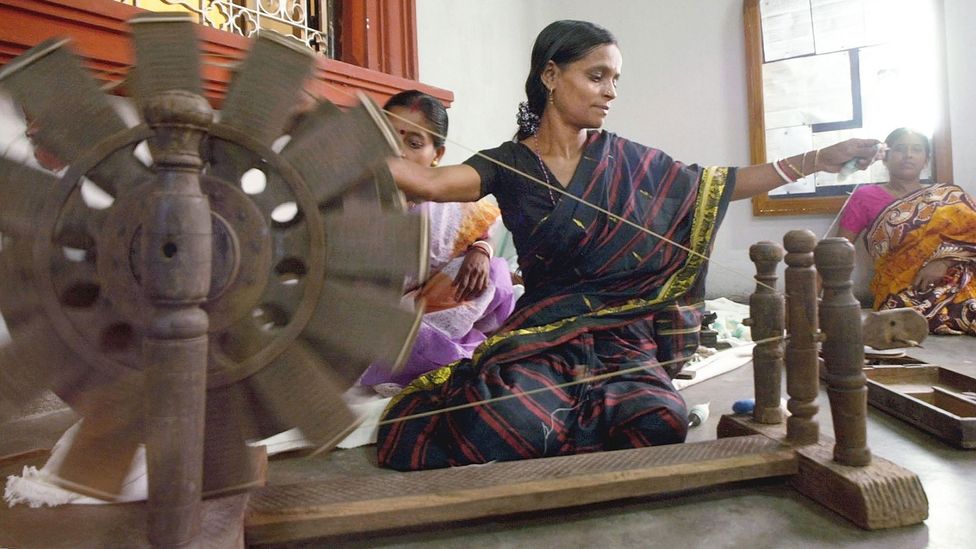
Hand-spinning has been part of India's cultural life for centuries (Credit: Getty Images)
"Khadi is a timeless fabric – classy, simplistic and breezy which has an authentic vintage appeal," says fashion designer Gaurang Shah. "In the 90s, when the trend for saris was chiffon and georgette, I was looking for an alternative to silk, and discovered a weaver weaving khadi saris. I instantly fell in love with the fabric – longer lasting than silk, and inexpensive.
"During the initial phase of my designer journey I had a lot of difficulty in making modern India accept khadi. It took me years to convince my clientele that khadi is unique."
The Hyderabad-based designer is known for his project in which he weaved 33 sarees with paintings of the great Indian artist Raja Ravi Varma, all interwoven in khadi with natural dyes. Every sari was woven over a period of six months, using fine fabric procured from Odisha and silk yarn.
The fabric is even more relevant today because of its sustainability factor. It's durable and long lasting, and hand-spinning and weaving have a low carbon footprint. Manufacturing one metre of khadi requires just three litres of water as opposed to 56 litres for mill fabric. In some states like Maharashtra and Madhya Pradesh, organic khadi is produced by avoiding all chemicals involved in the farming of cotton.
In October 2016 during his monthly radio talk, Prime Minister Narendra Modi urged people to buy khadi during the festive season, saying it would help poor families, "brightening the lives of… the weavers who toil day and night. Earlier it was khadi for nation and khadi for fashion but now, it is becoming khadi for transformation" he said. In 2018 an event Khadi Transcending Boundaries was presented by the Fashion Design Council of India in Delhi. Since then, KVIC has been giving a big impetus to khadi, partnering with various institutions to work towards better design, and there has been a 100% increase in khadi sales in recent years.
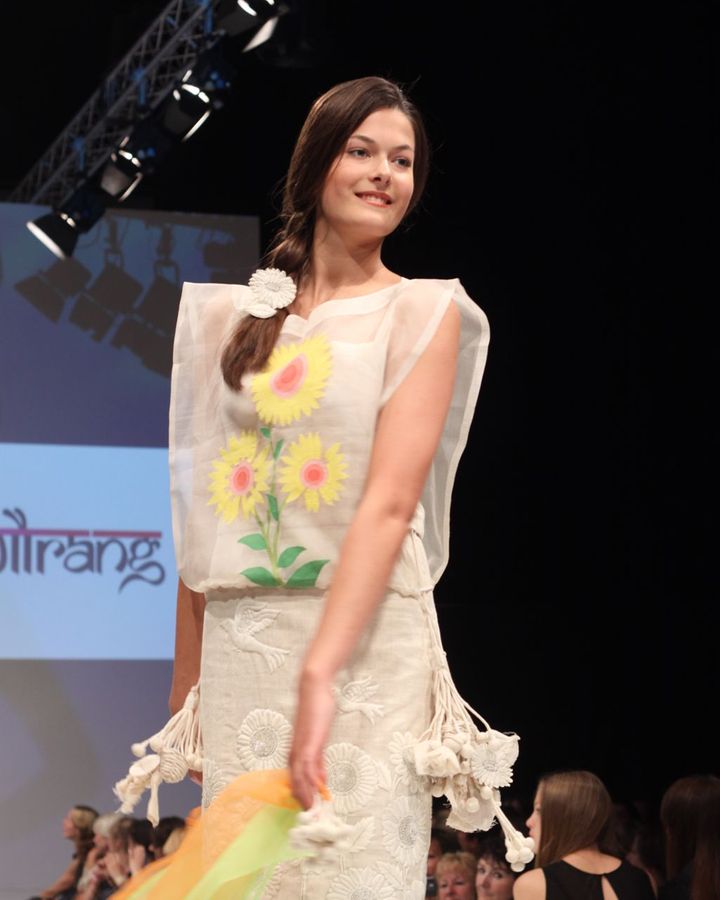
The fashion designer Gaurang Shah champions khadi, and frequently uses it in his designs (Credit: Gaurang Shah)
Khadi has changed drastically over the decades, since its days as the robust, undyed, handwoven fabric promoted by Gandhi. Most of the fabric that is sold now is mechanised khadi, woven with new model charkhas, where the yarn is made from mechanised and semi mechanised processes even if handwoven. Big menswear textile brands like Raymonds, Arvind Mills and Aditya Birla Textiles have also been working with KVIC to launch khadi collections.
Designers Shani Himanshu and Mia Morikawa and co-founders of the Delhi-based label 11.11 have launched khadi denim. "The fabric is 11.5oz selvedge khadi denim – which engages the work-wear twill weave structure of denim and marries it to the tradition of khadi," Morikawa tells BBC Culture. "The natural fibre is Kala cotton, [which] is indigenous to the region of Kutch and by default is organic – the farmers do not use any pesticides and synthetic fertilisers. It is a purely rain-fed crop that does not require additional irrigation to grow."
"The yarns of the fabric are handspun and then naturally indigo dyed before being handloomed and then hand stitched," she adds. "This process contributes to the engagement of rural economy and connects the communities involved. Handmade from start to finish each piece is signed, numbered and dated by the artisan connecting the makers directly to the wearers."
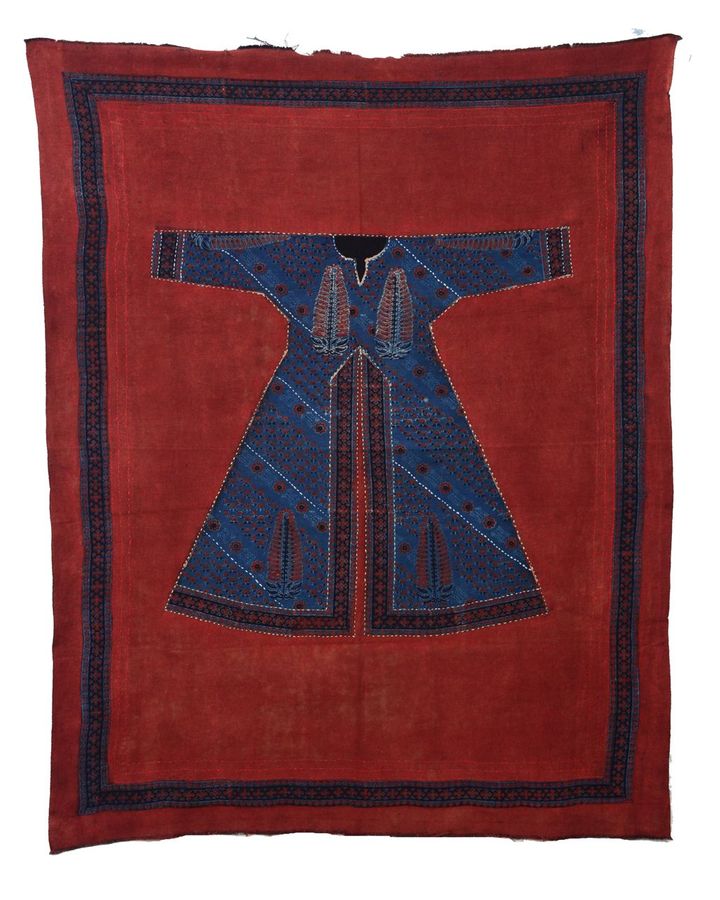
Artist Shelly Jyoti has incorporated the fabric into her art (Credit: Inder Gopal)
Debarun Mukherjee, a fashion designer based in Kolkata who has been working with khadi over the past 10 years, says: "What is needed is a new glamorous look and [designers] to think out of the box, and rescue the fabric from its staid, dull, worn-out stereotypical image. I dyed the fabric black in one of my collections and made evening wear from it with Indian silhouettes, from skirts and gowns to salwar suits, which was a sell out. I love the feel and fall of the fabric, and the fact that it's sustainable, and I use it a lot in festive wear, embellished with traditional embroidery."
Young designers like Priyanshi Jariwala, the founder of Khadi Cult, have brought khadi to the attention of millennials engaging with them through her Instagram account @the.k.cult. With quirky designs on the fabric, her brand weaves together contemporary and ethnic elements that appeal to a younger segment. From fun faces and hands to Rubik's cubes, her garments have a playful element.
Internationally too, the fabric has gained recognition and popularity. Many high-end Japanese designers are prepared to pay high prices for the fabric. Japanese avant-garde designer Issey Miyake took khadi to New York in an exhibition in 2019 called Khadi: Indian Craftsmanship at his flagship store.
Handspun khadi is nowhere near the Gandhian vision of clothing the millions in the country. Today it is more about sustainable luxury, supplied at a higher price to those who can afford it as a high-end fabric helping, and in the process preventing this centuries-old craft from dying.
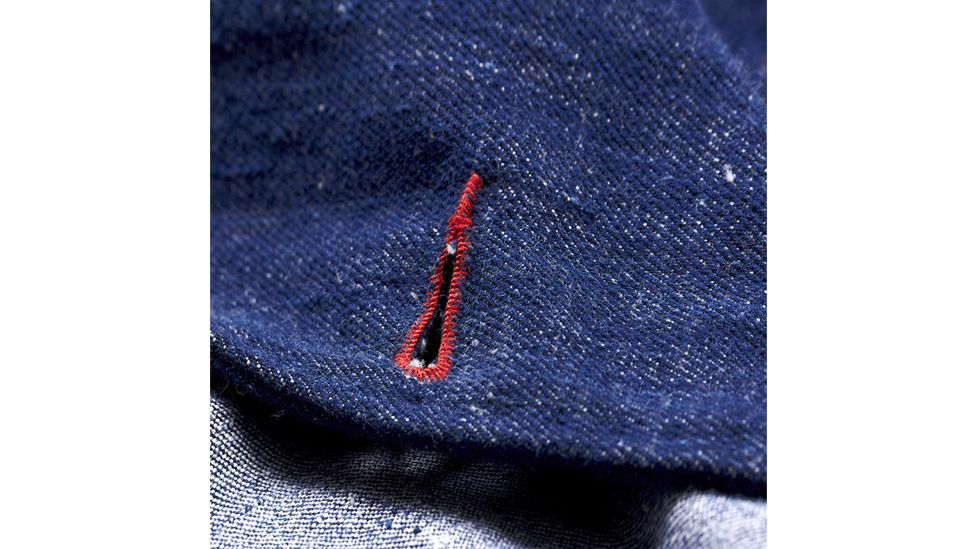
Delhi-based label 11.11 has launched a khadi denim, using the traditional skills of local craftspeople (Credit: 11.11)
"Khadi is more than a textile," says brand-strategy specialist Harish Bijour. "It is a statement. Within the Indian and global context, khadi is a statement of purpose. I do believe khadi is 'woke', much before the world even knew the meaning of the word woke. Gandhi wove self-reliance into it. Hand-spun is a statement that khadi makes in a world taken over by machines. And that is indeed its biggest USP. It is about a world that is real, as opposed to a world that is machine-made."
If you would like to comment on this story or anything else you have seen on BBC Culture, head over to our Facebook page or message us on Twitter.
And if you liked this story, sign up for the weekly bbc.com features newsletter, called The Essential List. A handpicked selection of stories from BBC Future, Culture, Worklife and Travel, delivered to your inbox every Friday.
"story" - Google News
March 16, 2021 at 07:36AM
https://ift.tt/3tnqsWj
The story of India's iconic freedom fabric - BBC News
"story" - Google News
https://ift.tt/2YrOfIK
https://ift.tt/2xwebYA
Bagikan Berita Ini















0 Response to "The story of India's iconic freedom fabric - BBC News"
Post a Comment